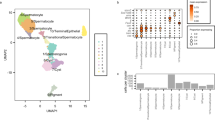Abstract
Effects of temperature treatment (heavy heat shock, HHS; heat shock, HS; and cold shock, CS) on the daily productivity of treated males in different spermatogenesis stages have been studied in isogenic line 51 of Drosophila melanogaster. The average productivity was shown to substantially decrease in all cases. The sum of the HS and CS contributions to this decrease was nearly equal to the HHS (the combined HS and CS) contribution, i.e., these contributions were almost additive. The temperature treatments did not kill mature sperm. In the control, mating productivity of day 1 exceeded that of the next day at least by 10–20%. Each day, most sperm in matings was new, i.e., matured during that day. Transposition induction of MGE 412was studied at four spermatogenesis stages after HS and CS. Both temperature treatments were effective but CS had a more pronounced inducing effect. Most temperature-induced transpositions occurred at stage III (meiosis) and IV (spermiogenesis). The day rates of transpositions at different stages were estimated. After HS at the meiosis stage, λ = 0.11 events per initial MGE copy per sperm per day of mating, which is approximately equal to the previous estimates after HHS. After CS at the meiosis stage, λ = 0.51. The transposition hot sites (including the previously known 43B and 97DE as well as a number of new sites) were detected. The lists of transpositions after CS completely included the corresponding lists after HS, which suggests similarity of induction mechanisms underlying CS and HS.
Similar content being viewed by others
REFERENCES
Zabanov, S.A., Vasilyeva, L.A., and Ratner, V.A., Mobilization of MGE 412 by g-Irradiation in an Isogenic Drosophila melanogaster Strain, Genetika (Moscow), 1995, vol. 31, no. 6, pp. 798-803.
Vasilyeva, L.A., Ratner, V.A., and Bubenshchikova, E.V., Stress-Induced Mobilization of Drosophila Retrotrans-posons: Existence of the Phenomenon, Characteristic Features, and a Possible Role in Rapid Evolution, Genetika (Moscow), 1997, vol. 33, no. 8, pp. 1083-1093.
Vasilyeva, L.A., Bubenshchikova, E.V., and Ratner, V.A., Heavy Heat Shock-Induced Retrotransposon Transpositions in Drosophila, Genet. Res., 1999, vol. 74, no. 2, pp. 111-119.
Vasilyeva, L.A., Ratner, V.A., and Bubenshchikova, E.V., Comparative Contribution of Various Genetic Factors to MGE Mobilization in Isogenization, Genetika (Moscow), 1998, vol. 34, no. 11, pp. 1484-1492.
Ratner, V.A. and Vasilyeva, L.A., Mobile Genetic Elements (MGEs): “Selfish” DNA or a Functional Component of the Genome?, Sovremennye kontseptsii evolyutsionnoi genetiki (Modern Concepts of Evolutionary Genetics), Shumnyi, V.K. and Markel', A.L., Eds., Novosibirsk: Inst. Tsitol. Genet., 2000, pp. 128-150.
Bubenshchikova, E.V. and Antonenko, O.V., Cold Shock Causes Multiple Transpositions of Mobile Element (MGE) Dm412 in D. melanogaster Male Germline Cells, 2-i S''ezd VOGiS: Tezisy dokladov (Proc. 2nd Meet. of the All-Russia Soc. of Genet. Breed.), St. Petersburg, 2000, vol. 2, pp. 186-187.
Lindsley, D.L. and Tokuyasu, K.T., Spermatogenesis, The Genetics and Biology of Drosophila, Ashburner, M. and Wright, T.R.F., Eds., New York: Academic, 1980, vol. 2d, pp. 225-294.
Finnegan, D.J., Rubin, G.M., Young, H.W., and Hogness, D.C., Repeated Gene Families in Drosophila melanogaster, Cold Spring Harbor Symp. Quant. Biol., 1978, vol. 42, pp. 1053-1064.
Ashburner, M., Drosophila: A Laboratory Handbook, Cold Spring Harbor, New York: Cold Spring Harbor Lab., 1989.
Shepherd, B.M. and Finnegan, D.J., Structure of Circular Copies of the 412 Transposable Element Present in Drosophila melanogaster Tissue Culture Cells and Isolation of its Terminal Repeats, J. Mol. Biol., 1984, vol. 180, pp. 21-40.
Fowler, G.L., Some Aspects of the Reproductive Biology of Drosophila: Sperm Transfer, Sperm Storage, and Sperm Utilization, Adv. Genet., 1973, vol. 17, pp. 293-360.
Ratner, V.A. and Amikishiev, V.G., Analysis of the Role of Functional Site Motifs in Possible Molecular Functions of MDG2, Genetika (Moscow), 1996, vol. 32, no. 7, pp. 902-913.
Vasilyeva, L.A., Bubenshchikova, E.V., Antonenko, O.V., and Ratner, V.A., A Response of the MGE 412 Pattern to Limiting Selection for a Quantitative Trait in a Drosophila Isogenic Strain Subjected to Heavy Heat Shock (HHS), Genetika (Moscow), 2000, vol. 36, no. 6, pp. 774-781.
Vasilyeva, L.A. and Ratner, V.A., Heavy Heat Shock (HHS) Induces Genetic Variation in a Polygenic System of a Quantitative Trait in Drosophila, Genetika (Moscow), 2000, vol. 36, no. 4, pp. 493-499.
Author information
Authors and Affiliations
Rights and permissions
About this article
Cite this article
Bubenshchikova, E.V., Antonenko, O.V., Vasilyeva, L.A. et al. Induction of MGE 412 Transpositions in Spermatogenesis of Drosophila Males Separately by Heat and Cold Shock. Russian Journal of Genetics 38, 36–43 (2002). https://doi.org/10.1023/A:1013759626857
Issue Date:
DOI: https://doi.org/10.1023/A:1013759626857




